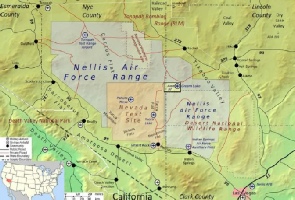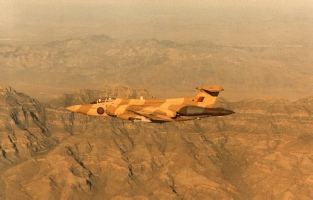


Red Flag ‘77 -
…... That achieved, the Squadron moved on to carrying and releasing the normal Red Flag conventional weapon load of both live and inert 1,000lb bombs as well as BL755 cluster bomb units (CBU). Flying operations were conducted in large coordinated missions with US colleagues, who were flying an impressive array of aircraft. Briefings were comprehensive and, yes, 208 was always given the callsign ‘Limey’.
Perhaps the most complicated part of the mission  was the taxi and take-
was the taxi and take-
As this was the RAF’s first participation, the Squadron was a relatively unknown quantity on the continental United States. The aim was to get to the target on time without being ‘killed’ by either the aggressors or by the ground defences in the target areas and then exit quickly and unscathed. Importantly, no-
The crews flew to their limits and employed the tactics that they had evolved during the lead- ndividual scope for thinking time and action. It was hot and the battlefield was relatively high and both factors dictated that everyone needed to watch thrust and energy levels whilst operating near the ground. The sun, the glare and perspective also were major factors for consideration.
ndividual scope for thinking time and action. It was hot and the battlefield was relatively high and both factors dictated that everyone needed to watch thrust and energy levels whilst operating near the ground. The sun, the glare and perspective also were major factors for consideration.
208 Squadron crews were cleared to fly down to 100 feet minimum separation distance (MSD), in other words a clearance bubble of 100 feet around the aircraft. In truth, and despite legislation and the Buccaneer’s rather dated instrumentation suite, at ultra-






